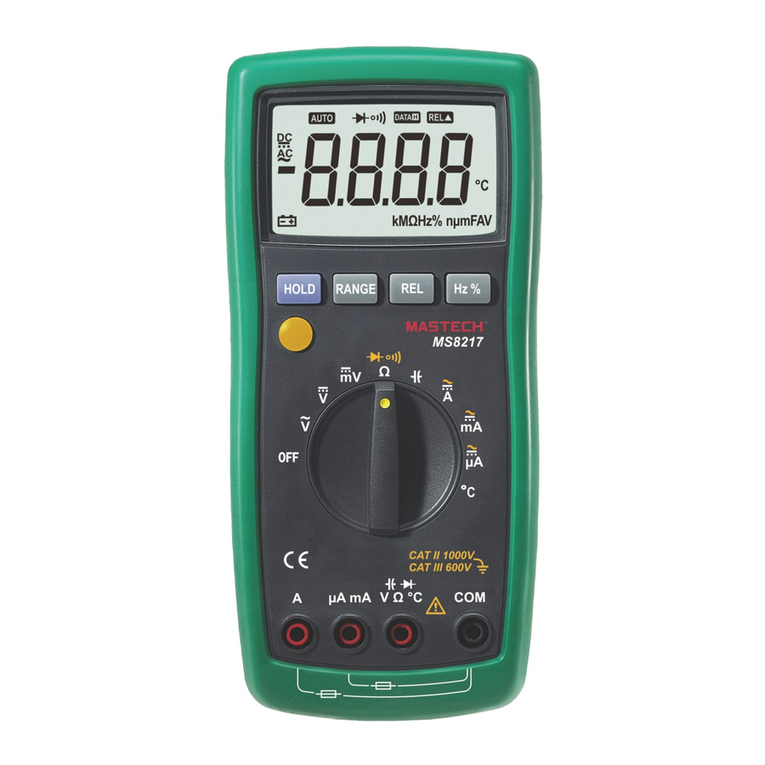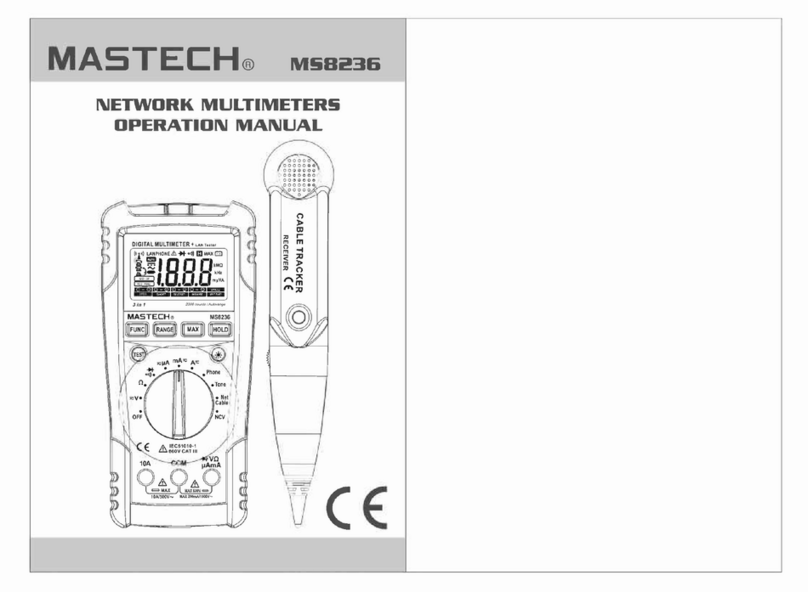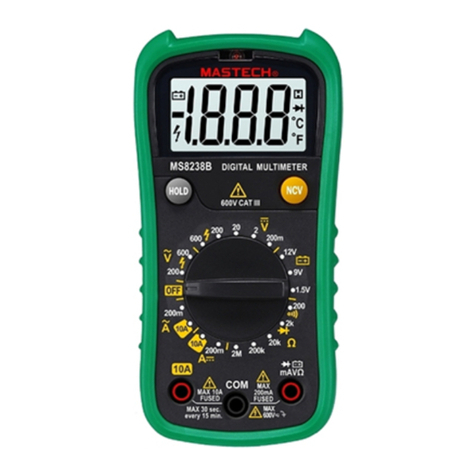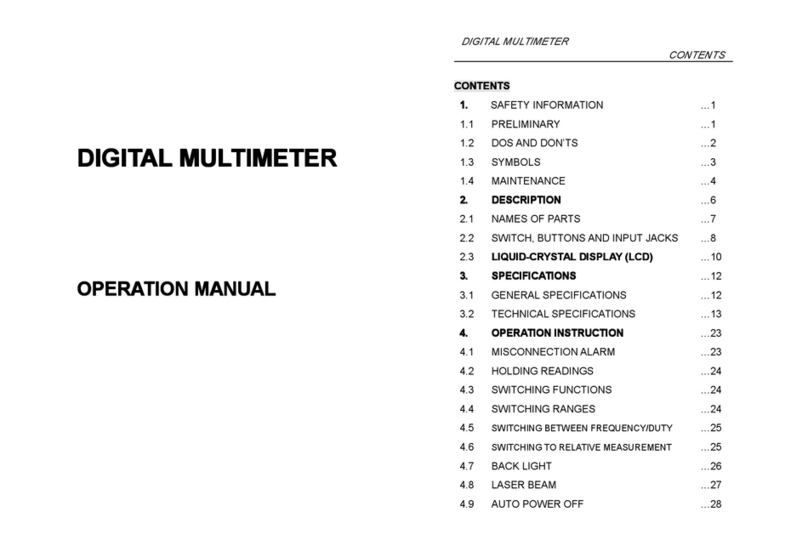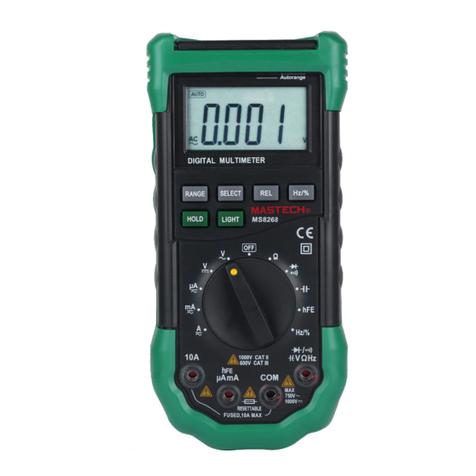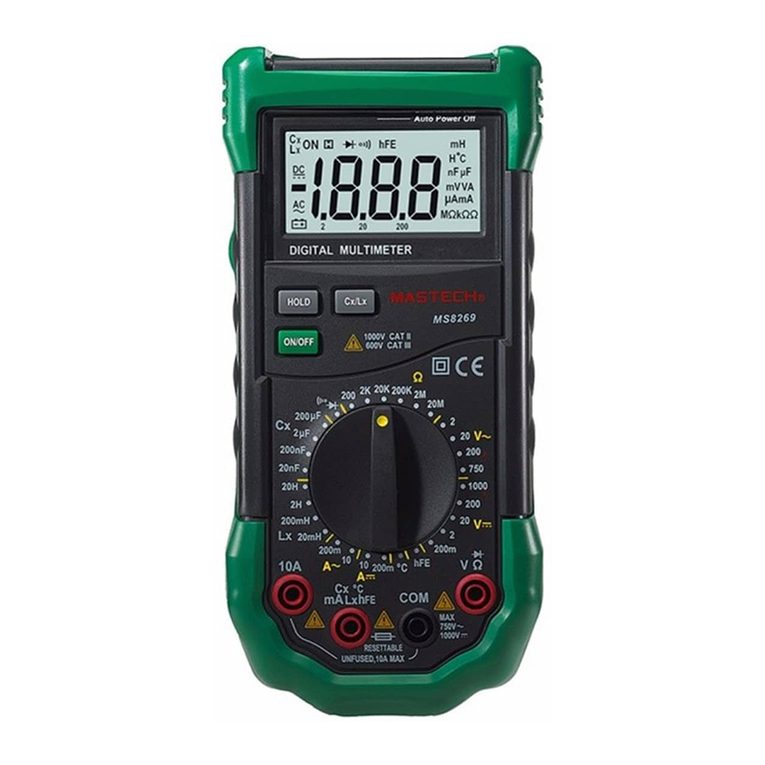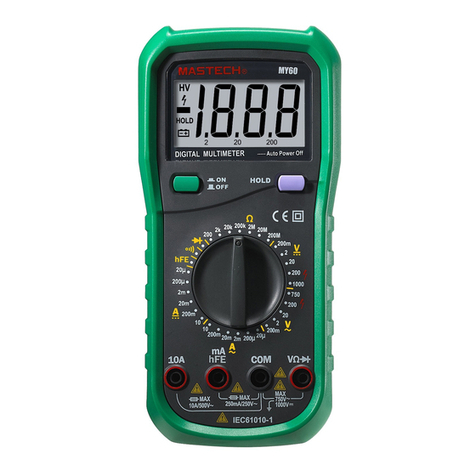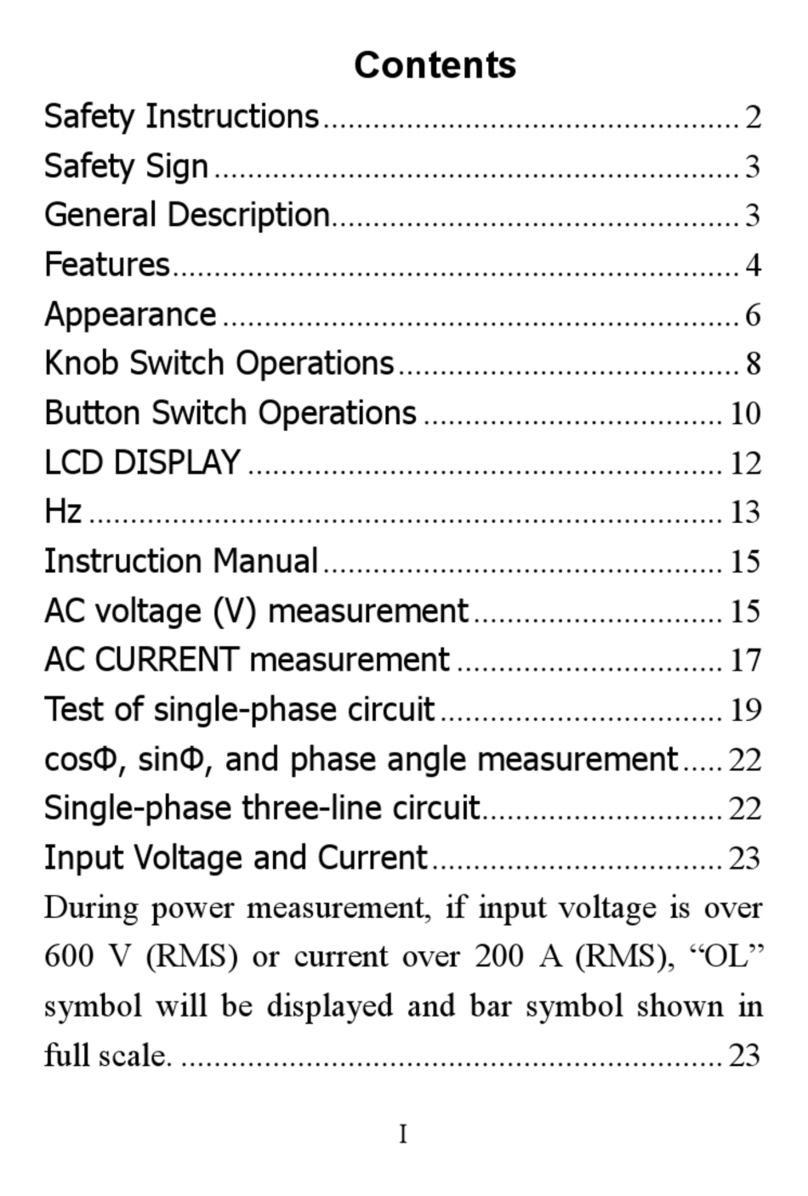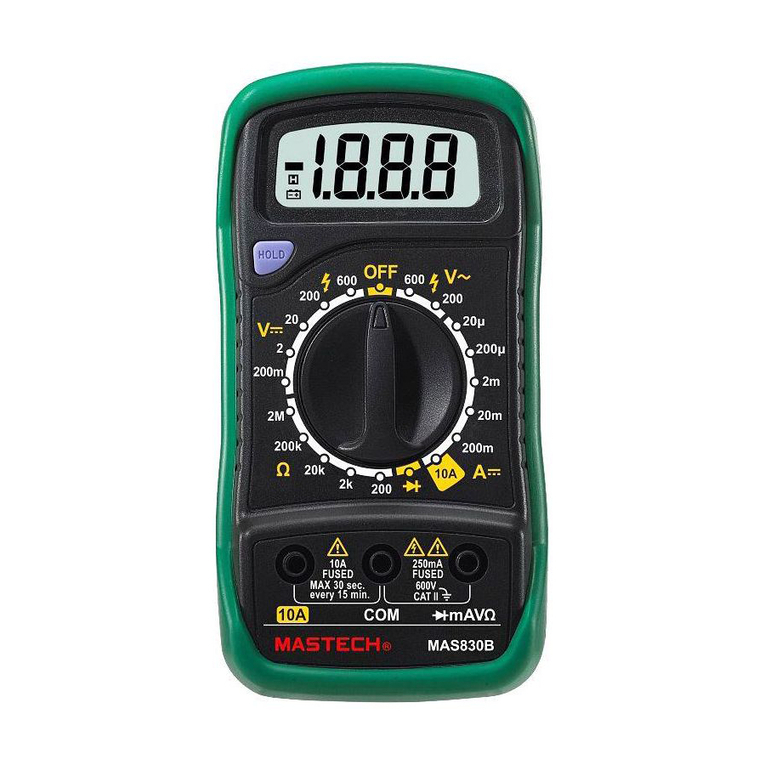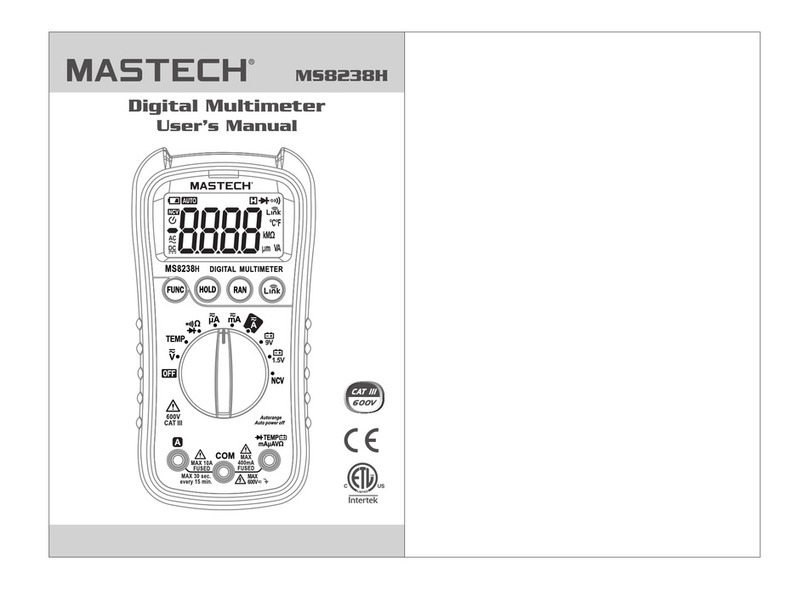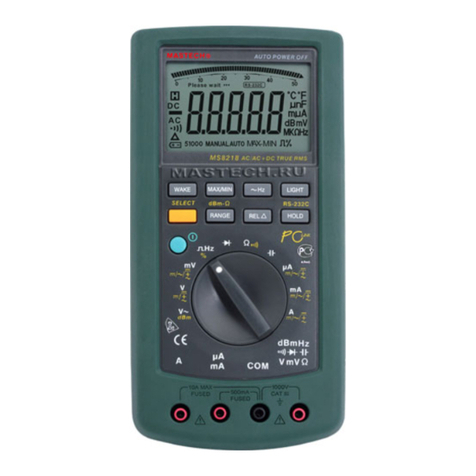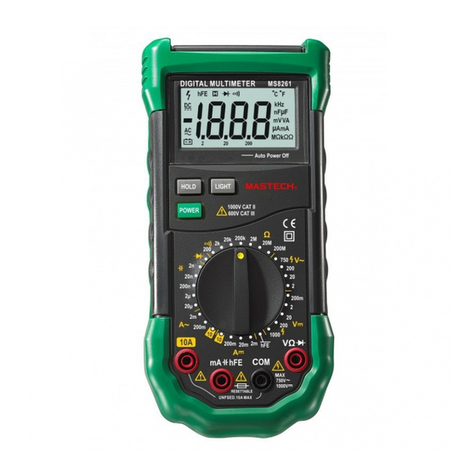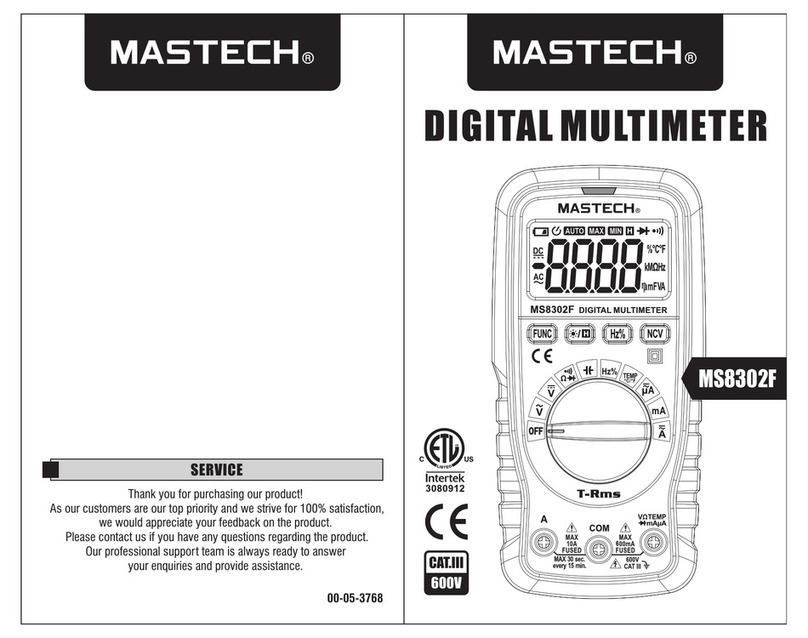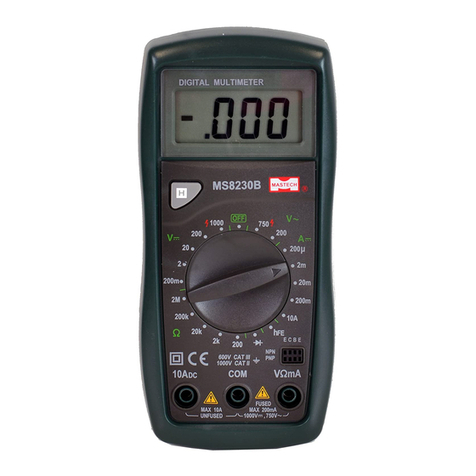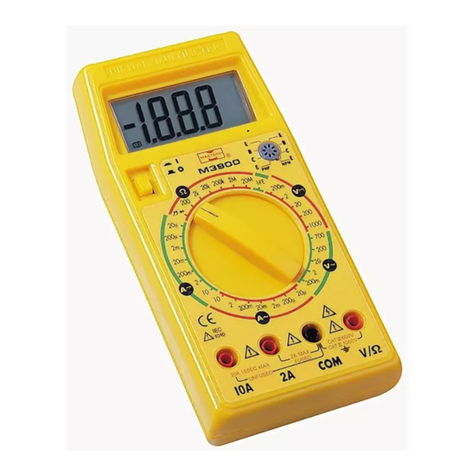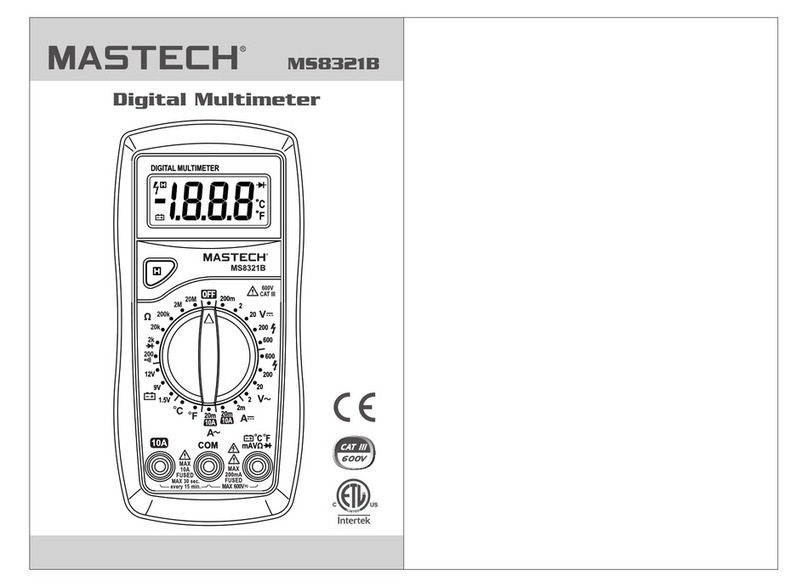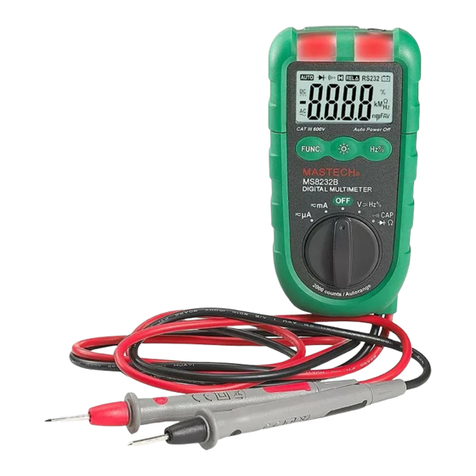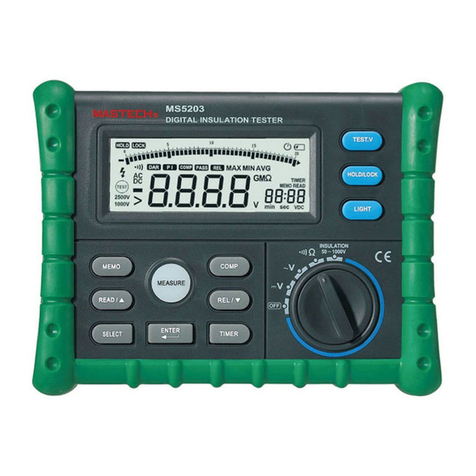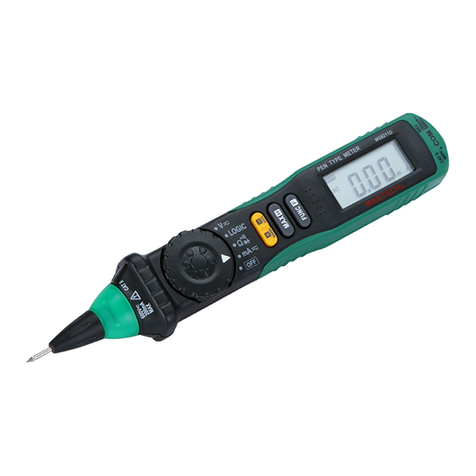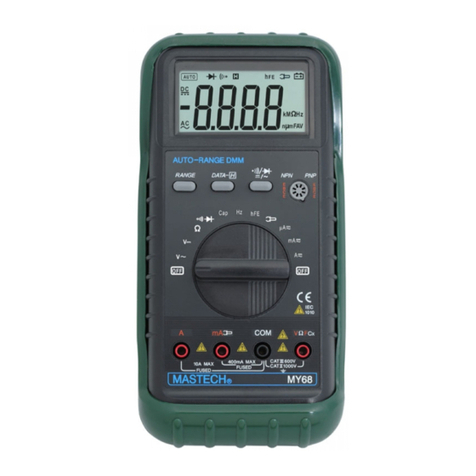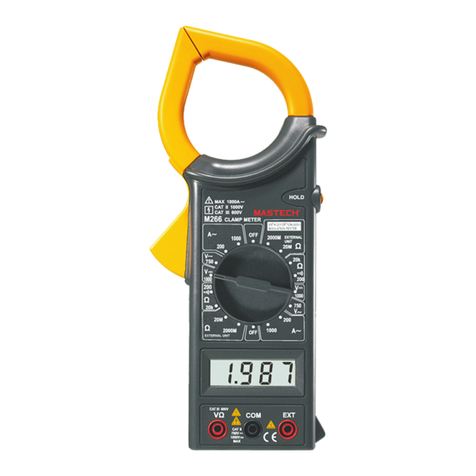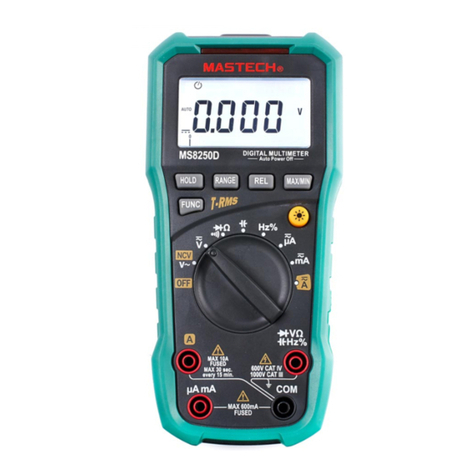01
02
Overview Safe Working Habits
To avoid electric shock or personal injury, please
read “safety information” and “warning and
related notes” carefully before using the meter.
The MS8239A is a small hand-held, safe and reliable
3.5” digital multimeter with stable performance and
novel structure. It can be used to measure DC
voltage, DC current, resistance, diode forward
voltage drop, circuit continuity and to test batteries.
It is an ideal maintenance tool easily carried by a
large number of users.
Warning To avoid possible electric shock or personal injury as
well as damage to the meter or measured objects,
please use the meter according to the following
procedures:
Safety Instructions
The MS8239A digital multimeter has been designed
according to International Electro Safety Standard
IEC-1010 (61010-1@IEC: 2001) concerning safety
requirements for electronic measuring instruments
and hand-held digital multimeters. It meets the
requirements for CAT.III 600V of IEC1010 and grade
2 for pollution.
• Users should use the meter strictly according to
the provisions of this manual. Otherwise, the
warranty for the meter may become invalid.
• The warnings in the user manual are used to remind
users of possible dangers or dangerous actions.
• The notes in the user manual are to remind users
of conditions or actions that may cause damage
to the measured object.
• Check the case before using the meter. Don't use the
meter with damaged case. Check to see if the case is
cracked or lacks plastic parts. Please pay special
attention to the joint insulating layer.
• Check to see if the test wire has insulation damage or
bare metal. Check test wire continuity. If the wire is
damaged, please replace it with a new one before
using the meter.
• Measure known voltage with the meter to verify that
the meter is working properly. If the meter is working
abnormally, stop using it immediately. A protective
device may be damaged. If there is any doubt, please
have the meter inspected by a qualified technician.
• Do not test voltage exceeding rated voltage marked
on the meter.
• When testing voltage exceeding 30v AC voltage RMS,
42v AC peak or 60v DC, be particularly careful to
avoid electric shock.
• When measuring, use correct jack, and select the
proper function and measuring range.
• Do not use the meter in explosive gas, vapor or dusty
environments.
• When using the probe, fingers should be behind the
probe protection device.
